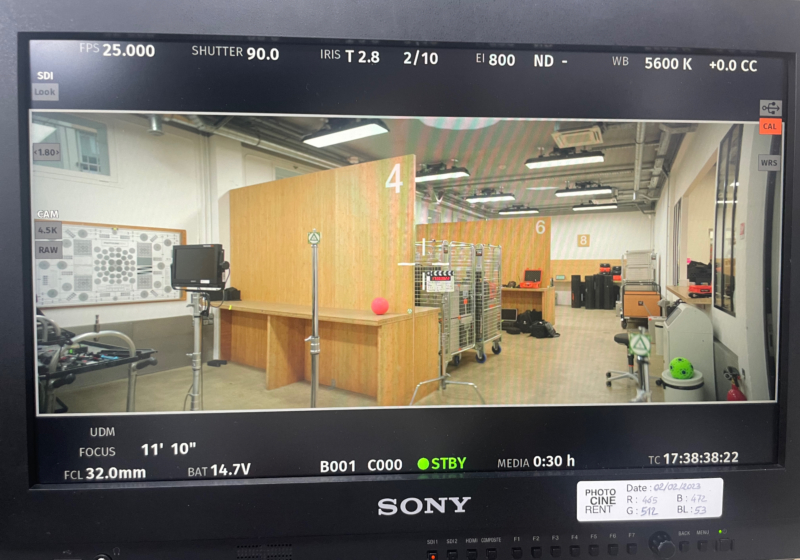On Thursday, February 23, 2023, we were several association members to meet at PhotoCineRent, a partner of UCO. On the bench: an Alexa MiniLF and a Venice 2, some Zeiss Supreme Prime and Compact Zooms, some Cooke SF+FF, an Ambient device, an Arri device… It was the first day of implementation of a project that we have been preparing for a long time: a study that we imagine to be the most documented possible about optical metadata.
We are familiar with the metadata generated by cameras, which qualify and technically describe the specificities of each shot and add parts of the data transmitted by the lenses when they exist. However, we are often less familiar with the metadata generated exclusively by lenses.
What are these metadata ? Which hardware configurations can be used to retrieve them ? Which software solutions exist to exploit them? These are the simple questions we ask ourselves, whose answers are not self-evident… This led us to explore the known protocols: Cooke /I, Zeiss eXtended, and Arri LDS, all partners of UCO and major manufacturers of cinema lenses, in interaction with cameras, of course, but also with other complementary equipment that is proving to be indispensable, without forgetting that metadata would be unusable without software solutions adapted to the processing of dynamic data, generated during the duration of the shot.
But what’s the purpose of it after all? First, you can shoot without what lenses’ metadata offer… But, on the other hand, on some projects, especially – but not only – those involving a lot of visual effects, lenses’ metadata can also be particularly useful for post-production operations, resulting in greater precision in image processing and saving precious time.
In the case of virtual studio shoots that allow dynamic interaction between the camera and a 3D set displayed on an LED wall, let’s be clear: lenses’ metadata are indispensable. One could even consider that in this context, the emergence of the virtual studio led to a reconsideration of lens metadata.
Through this study, which we will carry out over the long term and beyond a mainly technical interest, the idea also points out the extent to which the dialogue between shooting and post-production must be considered in the whole run, which lenses’ metadata represent perfectly.
The post-producers must be involved as soon as possible, and the cinematographers must understand their demands to adapt their shooting devices and setups or even propose solutions to fit into a production pipeline, which means not relying on shooting gear out of ignorance but to participate fully in the visual elaboration of the film even when technicality is high.
We thank our partners for their support and involvement in this unprecedented adventure, which we hope will be a tool for reflection and technical understanding to our members and beyond.

A protocol image, with depth, trackers and potentially distorted shapes…
Thanks to Valentine Lequet, co-president of the United Cinematographers Organization, Sara Cornu, Larry Rochefort and Teddy Ajolet, camera assistant. A big thank you to the PhotoCineRent team for their welcome and their involvement, as well as French Commission Supérieure Technique (CST) for image and sound.



